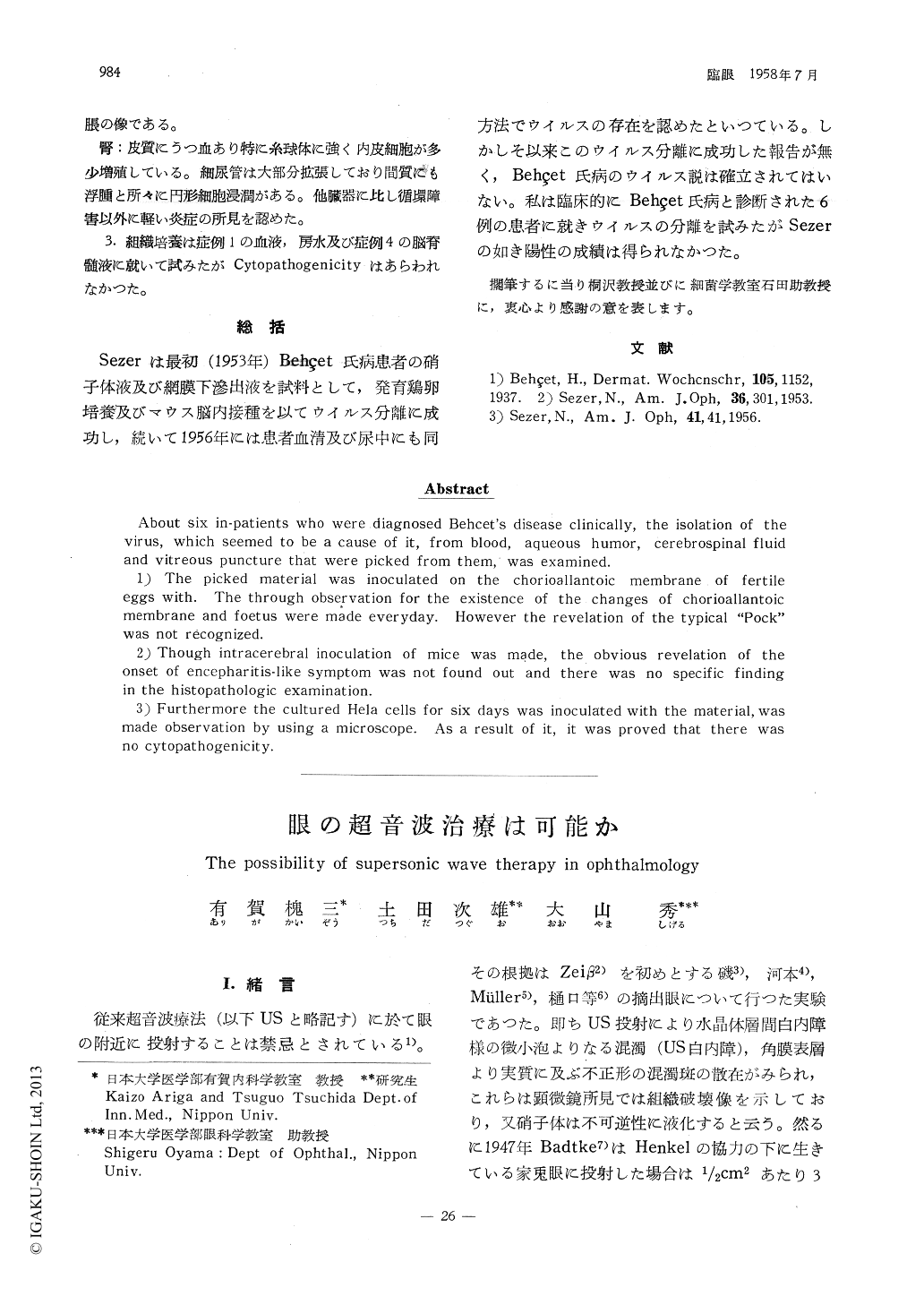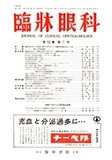Japanese
English
- 有料閲覧
- Abstract 文献概要
- 1ページ目 Look Inside
I.緒言
従来超音波療法(以下USと略記す)に於て眼の附近に投射することは禁忌とされている1)。その根拠はZeiβ2)を初めとする磯3),河本4),Müller5),樋口等6)の摘出眼について行つた実験であつた。即ちUS投射により水晶体層間白内障様の微小泡よりなる混濁(US白内障),角膜表層より実質に及ぶ不正形の混濁斑の散在がみられ,これらは顕微鏡所見では組織破壊像を示しており,又硝子体は不可逆性に液化すると云う。然るに1947年Badtke7)はHenkelの協力の下に生きている家兎眼に投射した場合は1/2cm2あたり3W,10分間迄では殆んど見るべき変化なく,僅かに角膜表層に軽度の膨脹,混濁を見るにすぎないと云い,次で彼は1948年初めてUSを眼の治療に応用した。
その後MüllerのもとでKleifeld及びFu-cks8)も同様に生眼では極めて多量を用いるか或は極特定の条件下に於てのみ非可逆性の障碍が,特に角膜に見られるのみで,他は24時間以内に消退する結膜充血,角膜上皮浮腫,瞳孔縮少,対光反応の減弱がみられるにすぎないと報告した。
The action of supersonic waves on the eye of rabbit was examined. Only a temporary change was caused by the radiation of intensity of 1-2 w per cm2 every other day. Fur-ther the accelerating effect of fhe waves on the absorption of the blood injected into the vitreous body of rabbits was found.
From this study author pointed out the possibility of utilization of supersonic wave wit-hin a defined intensity es a therapeutic method for eye disease without any disturbance.

Copyright © 1958, Igaku-Shoin Ltd. All rights reserved.


